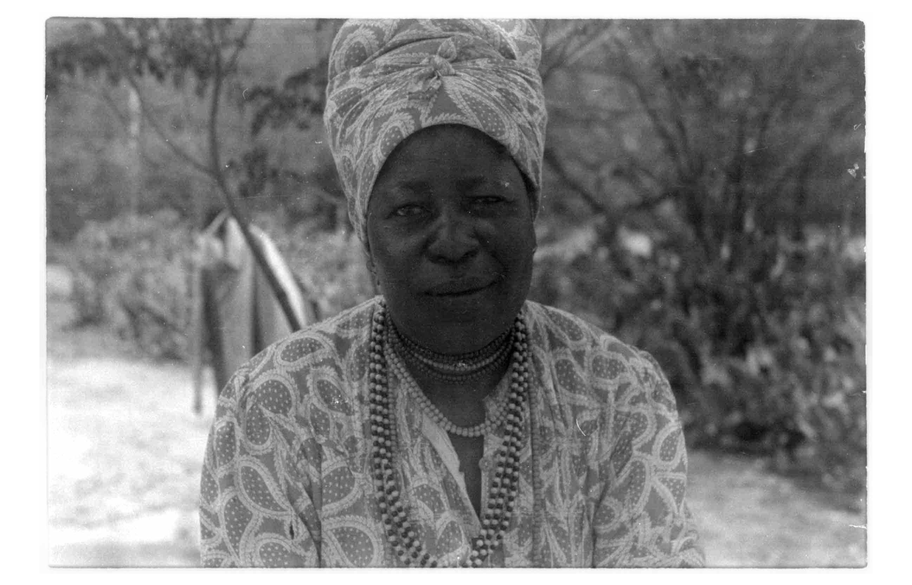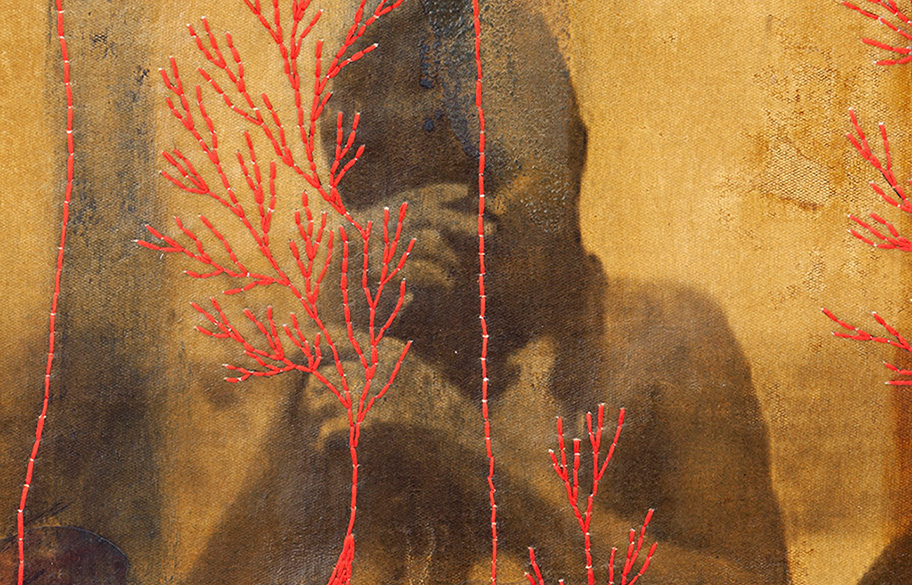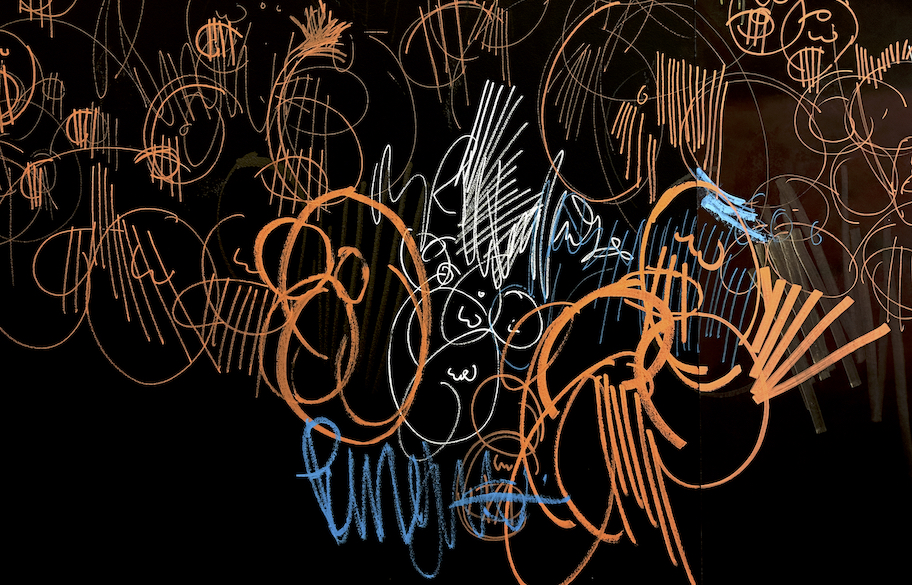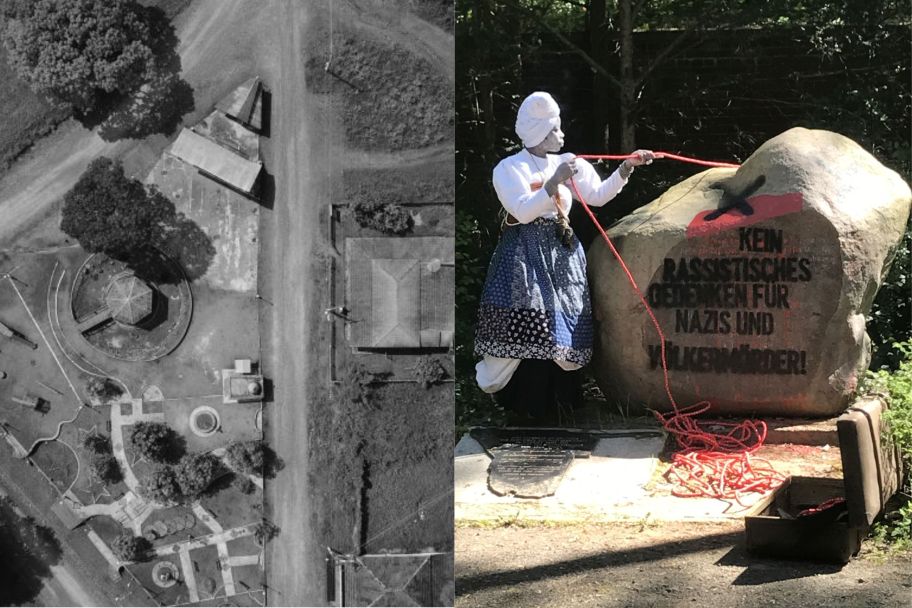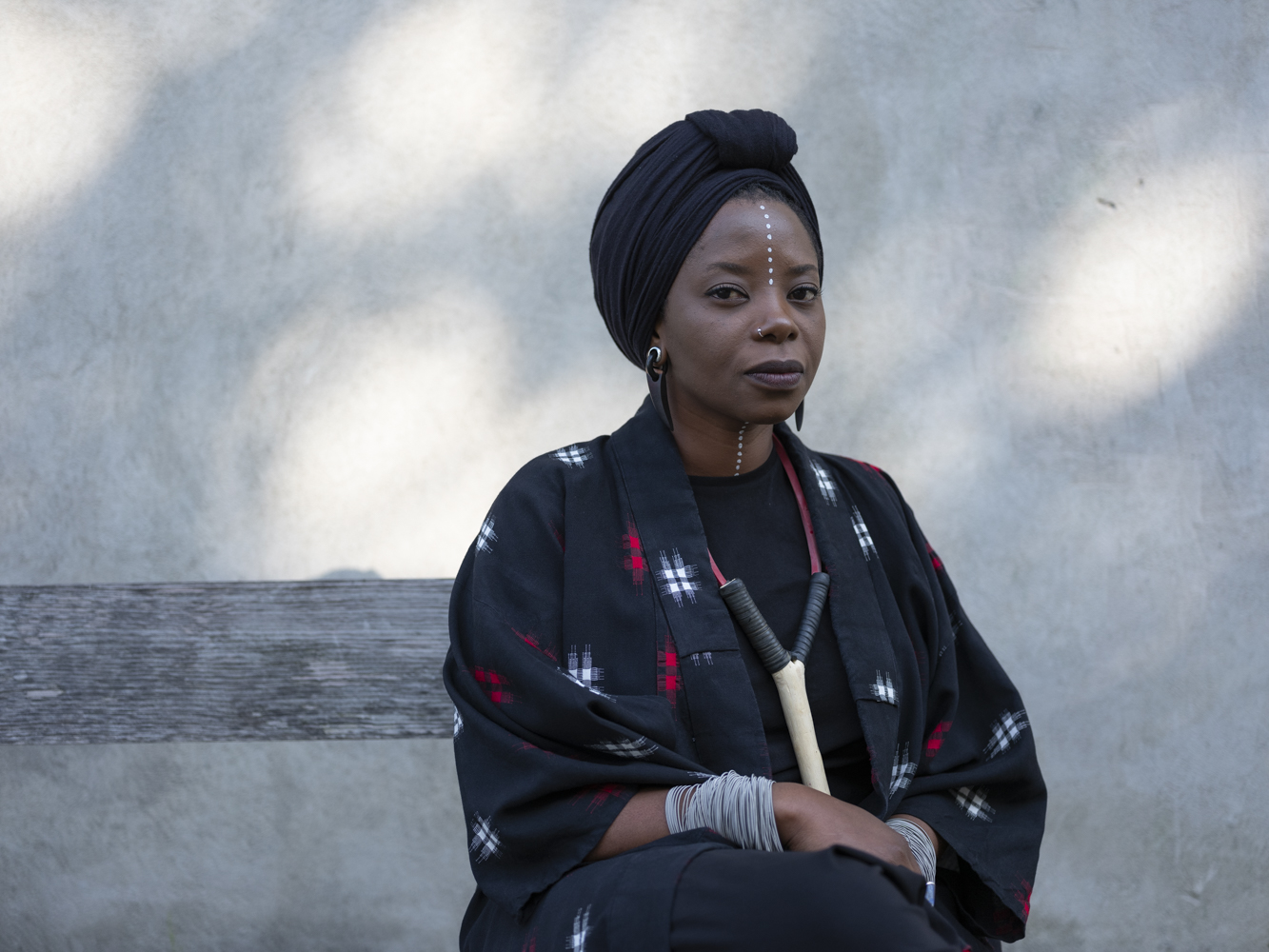Namibia, Visual Arts, 2022
Tuli
Mekondjo
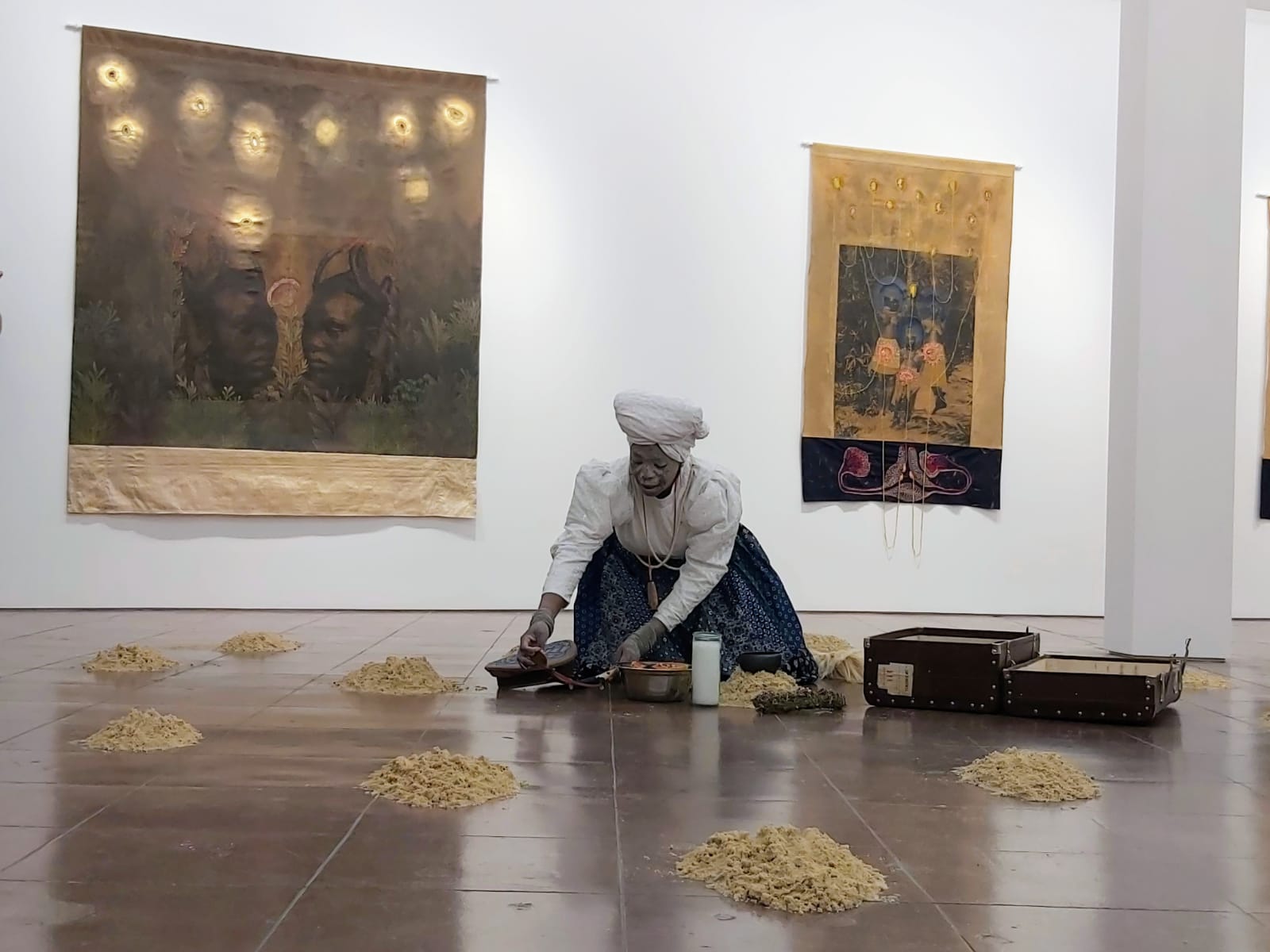
Namibian visual artist Tuli Mekondjo was born in 1982 in Angola to Namibian parents who joined Namibia’s SWAPO liberation movement in exile. Tuli Mekondjo spent her early childhood in exile camps in Angola and Zambia, returning to Namibia at independence in 1990. She is a self-taught artist who works with mixed media, sometimes extending these textured media into performance.
Tuli Mekondjo employs photographic transfer, paint, embroidery, resin, and mahangu (millet grain)—an important Namibian food staple. The majority of her work incorporates photographs from public and personal archives that document both Namibia’s colonial history and its independence war. Tuli Mekondjo mobilizes the photographic archive and reflects on historical discourses to articulate her stories at a very personal level, at the same time as engaging with collective memory. With a strong focus on gender, she urges lost past back to life; her sensitive inclusion of cultural symbols acts to center themes of displacement, trauma, continuity, fertility, and resistance.
Regarding colonial ethnographic photographs, Tuli Mekondjo has frequently been interested in the loss of Aawambo Kwanyama oral histories and cultural practices, ranging from initiation rituals to bodily adornment practices such as hairstyles. The artist is deeply concerned with reconstructing, claiming, and honoring black subjectivities in the past. Through the archive, the ancestors become accessible in the present. In particular, Tuli Mekondjo manifests the experiences of women and children whose stories have often been overlooked—especially in prevailing masculinist and party-based patriotic histories of the independence war.
Tuli Mekondjo’s most unusual medium, mahangu flour, finds an important place in this matrix. Applied onto her canvases with resin, this medium is pertinent to decoloniality: it is a direct reference to land, as well as to gendered relationships to space and her forebears. Through mahangu, she claims history, ancestry, and belonging; the land is placed in her art, and vice versa, she places herself in the land.
Tuli Mekondjo also has a performance practice which has multiple spiritual components and embodies a form of decolonial resistance, self-determination, and healing. She refers to some of her modalities as “mending the lost connection to [her] ancestors.”
Tuli Mekondjo has participated in exhibitions at Frac Nouvelle-Aquitaine MÉCA, Bordeaux (2020), Musée d’art et d’histoire Paul Eluard, Saint-Denis (2021), Rautenstrauch-Joest-Museum, Cologne (2022), and will soon show at Zeitz MOCAA, Cape Town. Alongside exhibitions in Namibia and South Africa, she has exhibited at numerous international art fairs and was a participant in Future Africa Visions in Time (2018), with Bayreuth Academy of Advanced African Studies and Goethe-Institut Namibia. Tuli Mekondjo’s artworks are held in many international private collections. She lives and practices in Windhoek, Namibia, where she has also worked with children at the Deutsche Höhere Privatschule Windhoek for eight years.
Text: Julie Taylor
Translation: Anna Jäger


